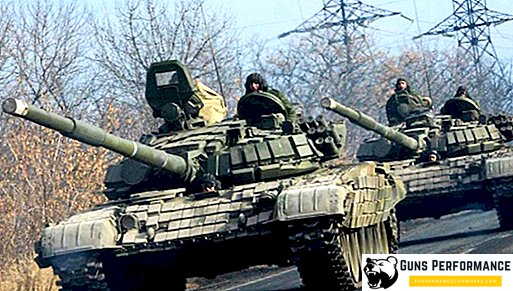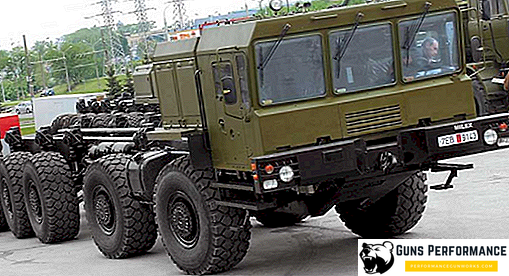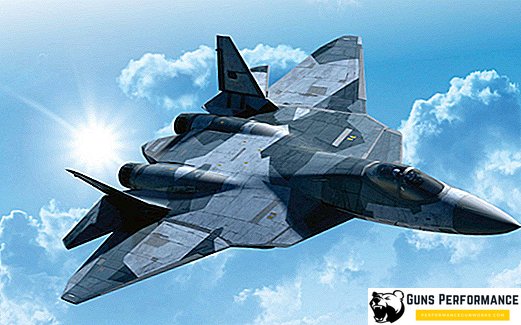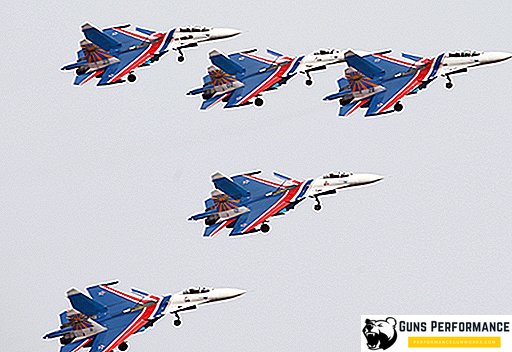Many countries at the end of the 19th century thought about rearming their armies. A review of that time shows that at that time revolvers were considered the most promising examples of short-barreled firearms, which combined reliability, multiply charged, and simplicity of design. One of the centers of the arms industry in Europe was the Belgian city of Liege. Since 1895, the Leon and Emile Nagan Armory Factory operated there. It was a fairly small family workshop, which produced its weapons and was engaged in the repair of revolvers.
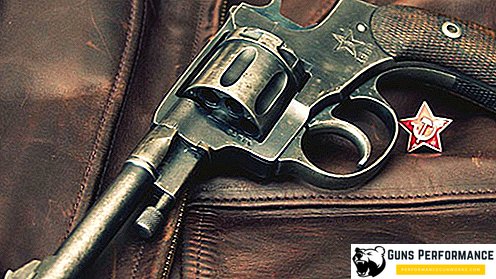
It was she who became the place where the legendary weapon was created - the revolver revolver, forever included in Russian history. Nagan is one of the symbols of the 1917 revolution, as well as the subsequent civil war. The word "revolver" later became a household name - often any revolver was called a revolver, and often any self-loading combat pistol. This weapon was used until the end of the Great Patriotic War, then it was decided to remove the military revolver with weapons. However, the military revolver was in service with the militia until the 1950s, and even longer in the collection system and the system of militarized guards.
Appearance history
The history of the legendary weapons should be counted from 1877, when Emil Nagan, the elder brother, created and patented the blueprints of a military revolver of his own design. The weapon turned out quite successful, so it was soon adopted in the Netherlands under the name "Revolver M 1877". The revision and improvement of this model resulted in the creation of a six-shot revolver of the model of 1878, these weapons were adopted for service in Norway, Sweden, Belgium, Argentina, Brazil and Luxembourg.
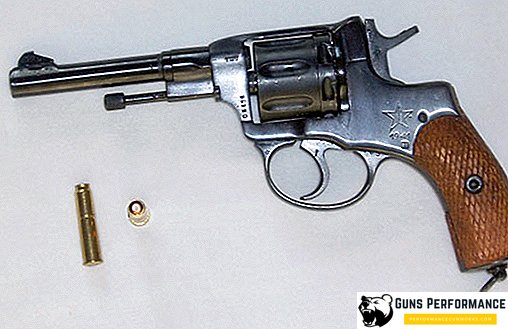
Russia also followed the promising innovations of the world small arms. Domestic Maritime Ministry in 1879 ordered the company of the Naganov brothers a small batch of 1,000 galan revolvers. In addition, Leon Nagan, the company's general manager, participated in the competition for the rearmament of the Russian army at the end of the 1880s, when a high-speed magazine rifle was reviewed and selected. Leon Nagan has achieved substantial commercial success in Russia, the emperor even issued a rescript for issuing 200,000 rubles to the gunsmith Leon Nagan. Emil Nagan in 1886 creates a new model of a revolver, which had a number of improvements and design features. For the new model was selected caliber 7.5 and a cartridge with smokeless powder, as well as a shell bullet.
In 1892, Nagan creates a new revolver, which embodies the best features of previous developments. This model had a caliber of 9 mm, it used a cartridge with smokeless powder. It was used until the 1940s in the Belgian police. This model of the revolver has become a classic, other modifications that were released later did not introduce noticeable changes in the design. One of the main differences of the new revolver was the drum, moving in the horizontal plane, when it was fired, it advanced on the barrel of the revolver. Due to this, it was possible to achieve a better obturation, as well as reduce the pressure in the initial part of the trunk.
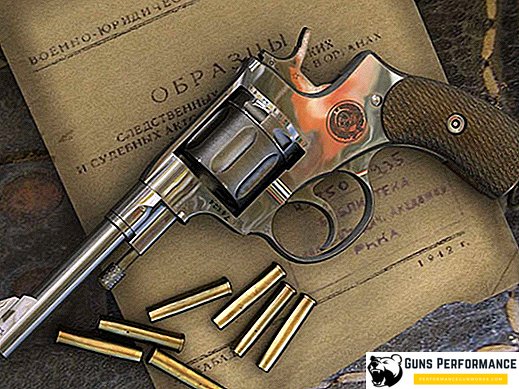
Design features revolvers Nagane
In all revolvers of Nagan, you can follow the general design solutions:
- the combat pistol had a double-action firing mechanism, made it possible to shoot with a self-platoon and a preliminary cocking of the trigger (except for "non-commissioned officers" and "soldier" pre-revolutionary models, where the self-cocking mechanism was blocked to reduce the consumption of ammunition);
- device monolithic one-piece frame;
- the door that opened the drum (chamber) by turning to the side. The exception was the model 1910, where the door leans back, freeing the drum, which was reclined to the right;
- the barrel of the revolver was screwed on a solid box landing;
- the drum in the fighting position hid a ramrod in its axis, which after firing played the role of an extractor, that is, an ejector of spent cartridges;
- the mechanism that was in the frame was closed with a flat lid;
- The drum of the revolver was at the same time a chamber and a magazine. In the most common sample of 1895, as well as most of its modifications, the drum had a capacity of 7 rounds.
On models where there was a thrust of the drum on the barrel, the drum was equipped with a return mechanism, which consisted of a spring and a drum tube. On the right wall of the frame there was a drum locking device, its role was played by a spring-loaded door. She, in a laterally tilted position, allowed the gun to be discharged and charged, and closed the chamber in a closed position, stopping the cartridge from falling out and also preventing the drum from rotating counter-clockwise.
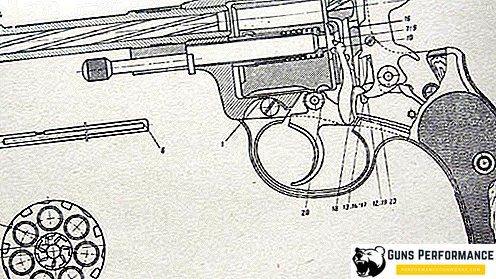
The gun has a mechanism of parts that perform the functions of a firing mechanism, a locking mechanism, as well as producing turning and pulling the drum on the barrel of a weapon: a combat spring, a trigger with a doggie, a ram and a breech. The gun had the following sights: a barrel with a front sight on the front, as well as a rear sight with an aiming slot, made on the upper part of the frame.
A pistol of the sample of 1895: disassembly of the soot showed a design consisting of 39 parts.
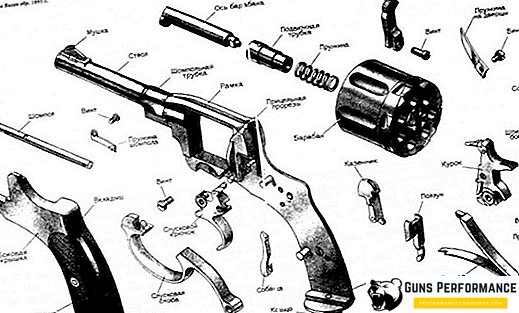
Cartridge
The cartridge for the revolver of the sample of 1895 was made from a brass sleeve, smokeless powder and a shell bullet were used. Such a charge for its time was distinguished by rather high ballistic parameters. The bullet had a fairly decent initial speed.
One of the main problems was the breakthrough of powder gases into the gap between the front end of the drum and the breech cut. The solution was found in the design of gunsmith Henry Piper: the trigger mechanism before the shot gave the drum forward. At the same time, the cartridge had a special design, the bullet completely sank into the cavity of the sleeve, and the upper part of the sleeve served as a shutter, which was given out by powder and gases and pressed to the bore at the moment of firing, which excluded the breakthrough of gases. This principle, which made it possible to simplify the design of the structure with the drum pulling on the barrel, was applied by Nagan in 1892. Under the new revolver, a new cartridge was created from a cartridge provided with an elongated Dultz.
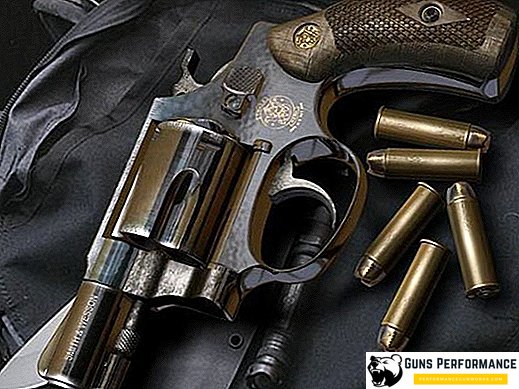
Specifications
- Caliber - 7.62 mm.
- Revolver length - 234 mm.
- Barrel length - 114 mm.
- The weight of the revolver without cartridges is 0.75 kg.
- The weight of the revolver with the equipped drum is 0.837 kg.
- The initial speed of a bullet is 250-270 m / s.
- Drum capacity - 7 rounds.
- Ammunition caliber - 7.62x39 mm.
- Sighting range - 50 m.
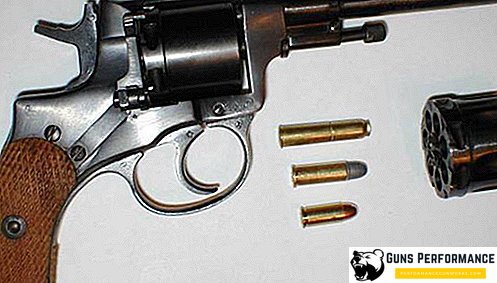
Combat modifications
- "Soldier's" revolver - a weapon with a non-self-firing trigger mechanism, it was ceased to be produced in 1918;
- "Officer" revolver - weapons with self-cocking trigger;
- Carabiners - for the frontier troops before World War I, a limited number of carbines with an integral butt and a barrel length of 300 mm, as well as a revolver with a removable butt and a barrel extended to 200 mm were fired;
- "Commander" revolver - a special compact version of a revolver, which assumed hidden wearing, it had a shortened handle and reduced the length of the barrel to 85 mm. It was created in 1927, was produced in small batches until 1932, in total about 25 thousand pieces were produced. "Commander" Nagan was in service with the staff of the NKVD and the OGPU;
- In 1929 a revolver with a silencer was created for reconnaissance and sabotage subunits, which was equipped with the Brahmite system of brothers I. and V. Mitinov of the silent and flameless firing;
- Nagant wz. 30 - Polish version of Nagant of 1895, serially produced from 1930 to 1939 at the plant in the city of Radom. In Poland, 20 thousand Ng wz.32 and Ng wz.30 were released.

Civil modifications
- MMG Nagan - used as a collectible souvenir model, museum exhibit or stage property, including as a teaching tool. On the drum and the frame there is an inscription "uch." No external changes, but the possibility of shooting is missing.
- Carbine KR-22 "Falcon" - A special conversion model, "Nagan" with an elongated barrel up to 500 mm, an integral wooden butt and a wooden forearm. The production of the carbine began in 2010, its weight is 2 kg.
- "Nagant Thunder" - Ukrainian-made conversion model from SOBR LLC. “Thunder” is a sports and training revolver, chambered for Flaubert’s caliber of 4 mm.
- VPO-503 "Nagan-S" or the so-called "Bluff" - signal revolver, produced since 2006, under the cap "Zhevelo". "Bluff" produced Vyatsko-Polyansky plant "Hammer". The “bluff” has a special design that excludes a reverse alteration in a combat pistol (the barrel is bored out, the drum chambers are changed to fit the caliber of the capsule, and a plug is inserted into the breech). At the same time, the “Bluff” revolver retained the completely identical appearance of a military pistol. The revolver is serviced and disassembled in the usual way.



